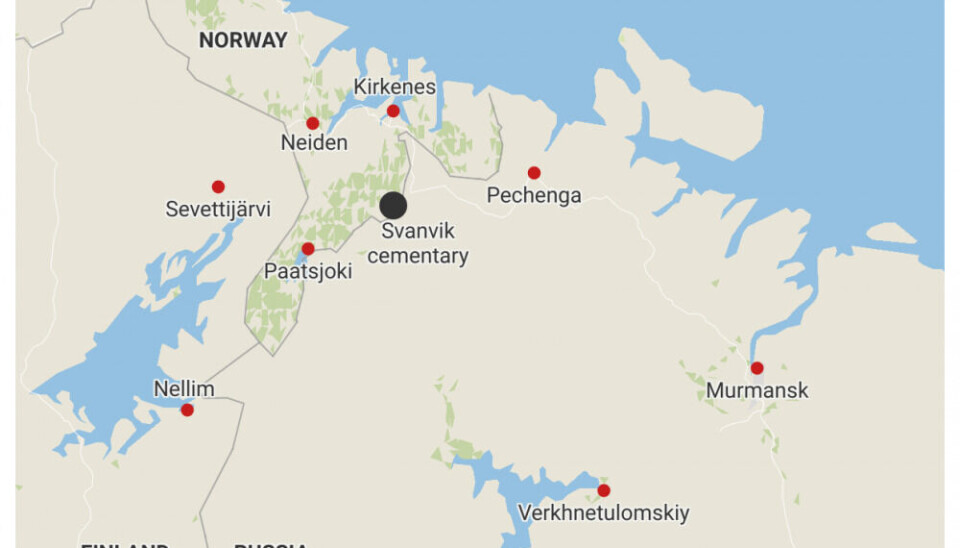
Skolt Sámi met to discuss the repatriation of human remains
The Skolt Sámi who attended the forums in Finnish-Norwegian boarder villages Neiden and Nellim expressed a wish for the remains, currently stored at University of Oslo, to be returned and buried at Svanvik cemetery, in Norwegian Paatsjoki valley.
Last week, the Norwegian Sámi Parliament organised a forum on June 10 in Neiden, Norway and on June 11 in Nellim, Finland to discuss the repatriation of Skolt Sámi remains. The villages are part of the Skolt Sámi homeland, which spans the border area of northeastern Norway and Finland, as well as the western part of Russia’s Kola Peninsula.
The Sami Parliament has received a repatriation request for the skeletal remains of 21 Skolt Sámi people exhumed from the island Hautasaari in Paatsjoki river in 1958. Nearly 20 Skolt Sámi gathered in Nellim to discuss the potential return and reburial of the skeletons.
The remains, now at the University of Oslo, date from the pre-Christian era, around 1310, to 1925, and belong to residents of Pasvik Siida, which refers to a traditional local Sámi community. Descendants live in Norway, Finland, and Russia due to historical border divisions.

Topics discussed in the forum were whether to rebury the skeletons, potential locations, and the manner of reburial. There was also consideration of conducting further research before any potential repatriation.
A strong wish for the return and reburial of the remains was expressed.
“The Skolt Sámi attending widely felt that the remains should be returned and reburied at the Svanvik cemetery, where some remains have previously been laid to rest. Discussions also included the return of items buried with the deceased,” reported Tauno Ljetoff, Finnish Sámi Parliament board member.
The items Ljetoff refers to were also retrieved during the 1958 exhumation. These artifacts, now exhibited at Tromsö Museum, may be trickier to receive as they are legally owned by the state under the Norwegian Cultural Heritage Act.
According to an agreement with the University of Oslo, The Norwegian Sámi Parliament has the final say on the fate of the remains.
A working group established in 2022, continues to prepare the repatriation matter so that it can be submitted to the plenary session of the Parliament for a decision.
The group includes representatives from the University of Oslo, Ä´vv Skolt Sámi Museum in Neiden, the Skolt Saami Siida Administration, and the Norwegian Sámi Parliament.
Ingeborg Larssen, Senior Advisor of Norwegian Sami Parliament and member of the working group, explains that the issue is complex and therefore the process takes time.

“There are ethical aspects to take into consideration, and we have to make sure we have heard all descendants from Norway and Finland. We do not have any contact with Russia due to the political situation,” Larssen explains.
Ljetoff is optimistic about the return of the remains, but he expects it to take time.
“I doubt anything will happen this year.”
The repatriation process has after all been going on for many years.
In 2013 the Eastern Orthodox Church, which the majority of the Skolt Sami are members of, requested the remains to be returned so that they could be reburied. There has been interest in continuing research on the remains to gain new historical insights of the Skolt Sámi, University of Oslo reports.
Repatriation efforts were initiated, but in 2015 The Sámi Parliament and the University of Oslo’s joint application for 350,000 NOK to return Skolt Sámi remains was rejected, NRK reported.
In Norway, the Sámi Parliament has overseen several reburials. The most extensive took place in Neiden in 2011, involving skeletal remains from 94 Skolt Sámi that were retrieved in Neiden in 1915.













